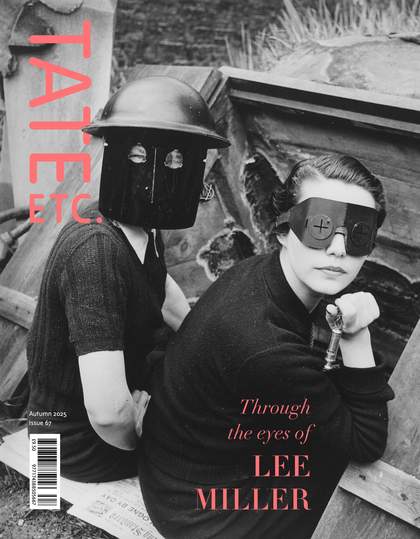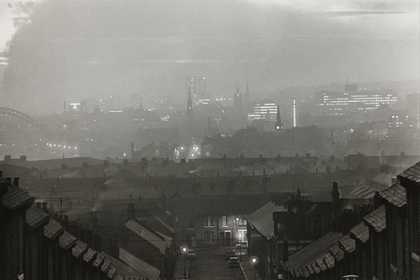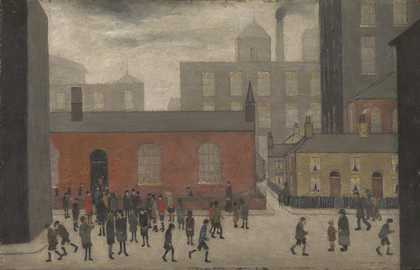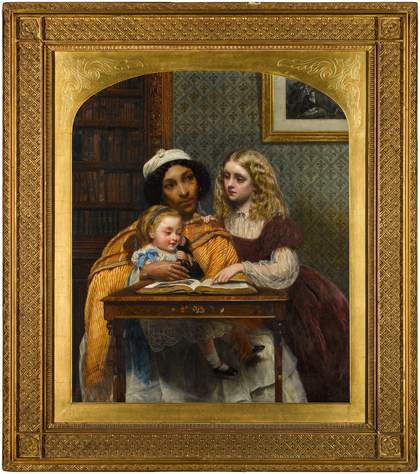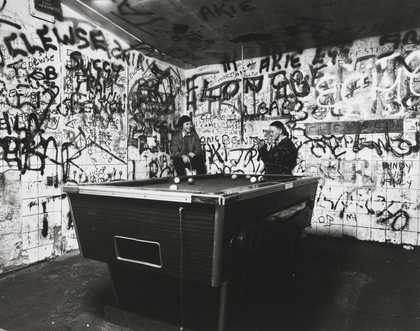
Sirkka-Liisa Konttinen
Byker Byte Pool Room (Byker) (1981, printed 2014)
Tate
It’s 1981 in Newcastle, round the back of the Byker community centre. Two friends are messing about by the pool table in an almost-derelict room.
One of them, whose hair looks as though it’s been cut in the classic pudding-bowl style, looks relaxed and happy. The other, wearing oversized army fatigues, is clearly a character. He seems to possess a keen sense of visual comedy, not least because it looks as if he’s just shoved the tip of his pool cue into one of the holes in the ceiling tiles. The cue hangs down, as if suspended in mid-air. The boy has opened his hands wide and he’s grinning: a cheeky ‘abracadabra’.
We can’t know what life was like for these two beyond the frame of Sirkka-Liisa Konttinen’s photograph. But we can make some guesses, given the high levels of unemployment and the widespread demolition and estate-building that had taken place in the local area in the preceding years. Our pool-cue magician looks as if he’s familiar with the sharp end of hardship, and I can imagine his high-energy resourcefulness being unwelcome in the average classroom.
Through this lens, we see the pair as real people, not generalised placeholders. Konttinen could have chosen to show them mugging up for the camera as junior troublemakers or presented a bleak flattening: poor kids. Instead, in a room where graffiti shows off the presence of local children with their felt-tipped names and proto-tags, the pair are reframed as individuals of character and humour.
Konttinen, originally from Finland, moved to Byker in 1969 and became part of the community there. She did so as a founding member of Amber Film & Photography Collective, an entity which proved to be heavily influential, along with its associated Side Gallery. Konttinen’s work inspired, among other things, the film Billy Elliot (2000).
While Side Gallery is currently closed due to funding cuts, it strikes me as having always been motored by the same creative and communal energies as a youth club – perhaps such as the one featured in the BBC’s long-running teen drama series Byker Grove, which was set on the same streets that Konttinen photographed. Although filmed on the other side of the city, in Benwell, this popular TV show offered positive new angles on the area through compelling storylines when it aired between 1989 and 2006.
Youth clubs still exist but have also suffered brutal cuts in recent years. I believe advocacy for these spaces begins with understanding them – and by transmitting joy and humour, Kontinnen’s photograph makes this case visually. Her perspective reminds me of the value of giving teenagers an early opportunity to see themselves reflected positively. Or in other words, to be seen.
Byker Byte Pool Room was purchased in 2015. It is available to view by appointment in the Prints and Drawings Room at Tate Britain. An ongoing campaign to save Side Gallery can be found via sidegallery.co.uk.
Emma Warren has been documenting grassroots music and culture for decades. Her new book, Up the Youth Club: Illuminating a Hidden History, is published by Faber.

